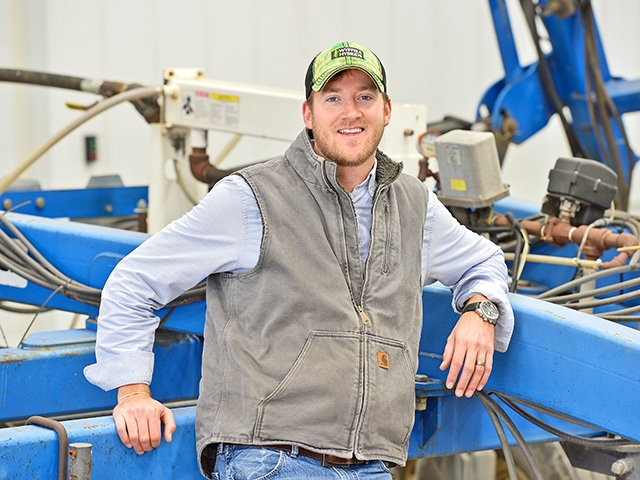This yearlong endeavor looks at how four farmers are evaluating technology and agronomic information that can boost the productivity of their operations.

It's the multi-thousand-dollar question looming before farmers this spring: Can they afford to push for big yields in the face of low commodity prices?
"I don't think you can afford not to," says Iowa Falls, Iowa, producer Landon Aldinger. "And what you really can't afford is to do it inefficiently. We have an investment in agriculture, so we have to protect it. We don't think we can do that by sacrificing yield. When prices are low, we need those extra bushels more than ever."
Landon farms with his father, Mike, who is a certified crop advisor and a seed dealer. In-field seed-research plots, along with results from herbicide, fungicide and fertility trials, keep the Aldingers in constant learning mode. While they are eager to try new products, practices and ideas, only the ones that are vetted carefully are adopted.
Understanding the farm's soil types and capabilities is fundamental, Landon says. Crop ground is 100% grid-sampled and soil-tested every four years. Phosphorus and potassium are maintained at goal levels.
The Aldingers are experimenting with Nitrogen (N). Last year, they reduced spring N rates between 40 and 50 units. They then made an in-season, sidedress variable-rate application based on a soil nitrate test.
"We saw a lot of variation in available nitrogen— as much as 60 units or better across 80 acres," Landon says, for instance. "The overall N rate was lower, so we saved money without sacrificing yields, and I felt like we were also being environmentally proactive. This is just a one-year snapshot, but it was successful enough we'll expand it this season."
Landon also tried a post-tassel anhydrous application and saw positive results. He says it might be a good option for hybrids that respond well to increased management.
Powered by on-farm data, the Aldingers have been using variable-rate fertilizer applications for several years and have moved to variable-rate seeding, as well. To fine-tune those and other practices, they are participating in a localized version of "big data" as well as working with other data-focused businesses.
"We're looking at more layers of data so we can make better decisions, especially in regard to fertility and variable-rate seeding prescriptions," says Landon, who offers other area farmers precision-data solutions through his business, Precision Farm Management. "It's not just about bigger yields, it's also about reducing risk. The more you know about your fields, the less risky those management choices become."
The critical demand for good information, Landon adds, makes farming more of a team effort than ever before. A key member of his information team is Mike Behrhorst, his BASF Innovation Specialist.
Behrhorst, who works with crop producers in north-central Iowa on wide-ranging agronomic and technology issues, says area farmers remain committed to bumping up bushels per acre. They are, however, mindful of getting what they pay for. "Demand for a return on their investment is very high," he says. "More and more, they want a higher confidence level on products and practices. That's where I can help."
In 2015, the Aldinger family and many other Iowa farmers took a yield hit from Northern corn leaf blight, and Landon will work with Behrhorst this season to refine the farm's fungicide program.
"This disease has become something we have to plan for in terms of both seed genetics and fungicide application," Behrhorst says. "Last year, we saw a 25-bushel response to using a fungicide like Headline Amp compared to no fungicide. That's a pretty big payoff, but we'll continue to zero in on the optimum application timing for Landon's farm."
Landon has observed in recent years that diseases have shown up late in the growing season. He wants to know if a later fungicide application will be more cost-effective, and he'll further explore the impact of dual applications.